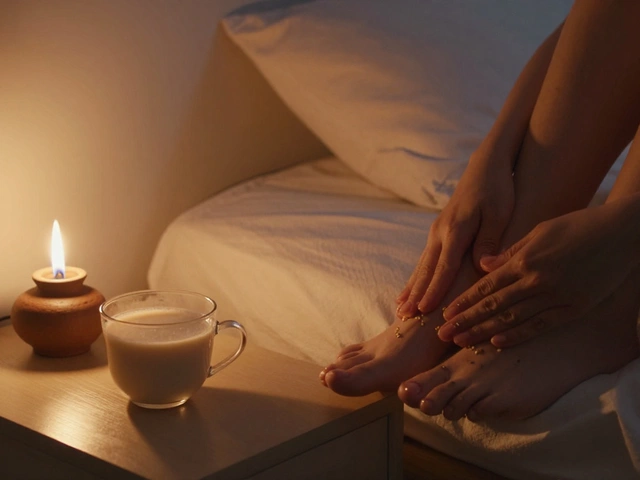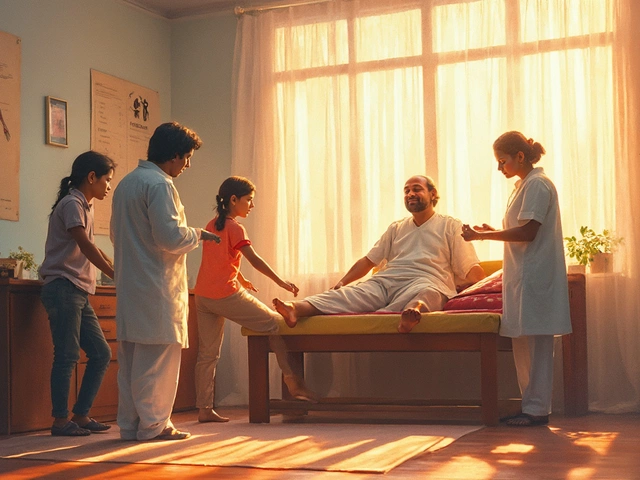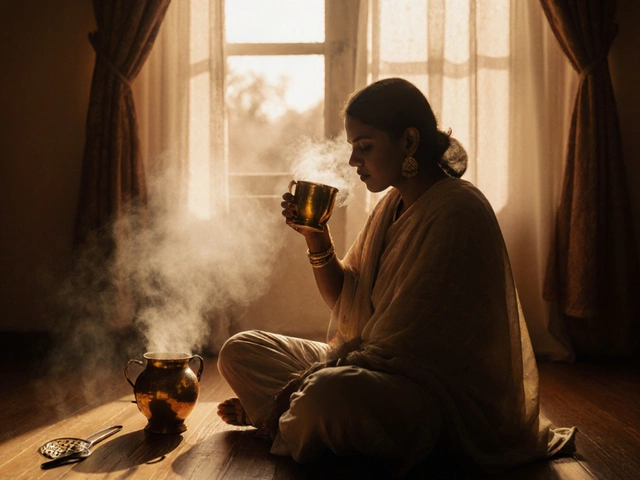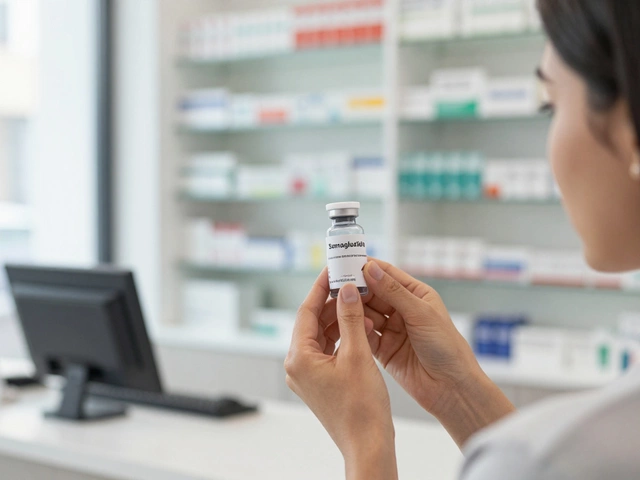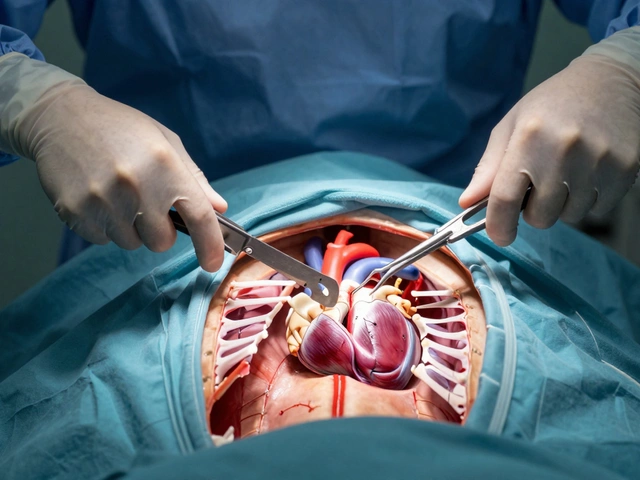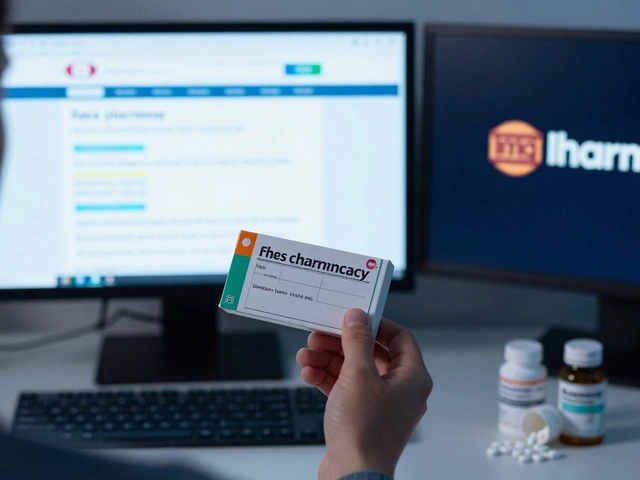You want better sleep, calmer gut, fewer flare-ups-and you want to know when Ayurveda will actually start working. Here’s the straight answer: Ayurveda rarely acts like a painkiller. It’s more like switching to a nutrient-dense diet and consistent training-small wins early, bigger shifts with time and adherence. Many people notice lighter, steadier energy and improved digestion in 2-4 weeks; skin, hormones, and joints often need 6-12 weeks; deep metabolic reset or autoimmune stability can take 3-6 months. If you’ve been ill for years, expect a marathon, not a sprint.
Before we get into the details, a quick promise: this guide gives you clear timelines by condition, what speeds things up (and what slows them), and when to change course. No fluff. No magical claims.
TL;DR timelines, what to expect, and a quick reality check
how long does Ayurveda take to show results? Here’s the short version-based on clinical patterns in Indian practice, AYUSH guidance, and what randomized trials on classical Ayurvedic herbs typically show:
- Acute, functional issues (indigestion, mild insomnia, stress): first changes in 3-7 days; clear benefit in 2-4 weeks.
- Skin and hair (acne, dandruff, hair fall): first changes in 2-4 weeks; meaningful change in 6-12 weeks; stick with it for 3-4 months.
- Hormonal and metabolic (PCOS, thyroid imbalance, prediabetes): steady change in 8-12 weeks; bigger wins in 3-6 months; recheck labs at 12 weeks.
- Joint pain and osteoarthritis: symptom relief in 2-4 weeks; mobility and stiffness improve by 8-12 weeks; combine with physio.
- Autoimmune and long-chronic conditions (IBS, psoriasis, rheumatoid arthritis): stabilization in 8-12 weeks; fewer flares in 3-6 months; long-term care needed.
- Panchakarma (detox/resets): most programs run 7-21 days; you often feel lighter/clearer in 1-2 weeks, with deeper benefits unfolding over the next 4-8 weeks if diet and routine stay tight.
Evidence snapshots you can trust:
- Ashwagandha for stress: randomized, placebo-controlled trials show improvements by week 2-4, with bigger effects by week 8 (Indian Journal of Psychological Medicine; Nutrition; multiple trials 2012-2021).
- Curcumin/turmeric for knee osteoarthritis: meta-analyses report pain and function gains by week 4-8 (Journal of Medicinal Food; Trials in 2016-2022). Quality varies, but trends are consistent.
- Boswellia for osteoarthritis: improvements in pain scores by 8 weeks (Phytomedicine, 2019). Some extracts work faster if standardized.
- Triphala for constipation/digestive tone: bowel habit and bloating improvements in 1-2 weeks in small RCTs (Ancient Science of Life; AYU Journal).
- Guggul and Arjuna: lipid and cardiac marker changes usually show at 8-12 weeks in clinical studies and classical protocols (Ministry of AYUSH monographs; Pharmacognosy Reviews).
Rule of thumb (not gospel): for each year you’ve had a chronic condition, budget roughly one month of steady Ayurvedic care to see meaningful stabilization. If something is very new or functional (no structural damage), you’ll often see quicker wins.
Decision mini-map you can use now:
- If your issue is acute (indigestion, mild anxiety, sleep): give a clean 2-4 week trial.
- If it’s chronic but stable (PCOS, IBS, acne, OA knee): plan 12 weeks before you judge; review at week 4 and week 8.
- If it’s severe or flaring (psoriasis, RA, uncontrolled diabetes): expect a 3-6 month arc; partner with both your MD and a BAMS Ayurvedic physician.
| Condition / Goal | First noticeable change | Meaningful change | Review milestone | Notes (typical therapies) |
|---|---|---|---|---|
| Indigestion, bloating | 3-7 days | 2-4 weeks | Week 2 | Triphala, dhaniya-jeera-ajwain teas, pathya diet |
| Stress, poor sleep | 1-2 weeks | 4-8 weeks | Week 4 | Ashwagandha, brahmi, abhyanga, breathwork |
| Acne, oily skin | 2-4 weeks | 6-12 weeks | Week 6 | Neem, manjistha, gandhak; dairy/sugar control; ubtans |
| Hair fall, dandruff | 3-4 weeks | 8-12 weeks | Week 8 | Bhringraj oil, amla, stress and iron/B12 check |
| PCOS (cycle regularity) | 6-8 weeks | 3-6 months | Cycle 3 | Kanchanar guggulu, shatavari; diet, strength training |
| Thyroid (subclinical) | 8-12 weeks | 3-6 months | Week 12 labs | Guggul, gokshura; sleep/stress; adjust meds only with MD |
| Prediabetes / HbA1c | 4-8 weeks (fasting glucose) | 12 weeks (HbA1c) | Week 12 labs | Gudmar, jamun, fiber; walking after meals; portion control |
| Knee osteoarthritis | 2-4 weeks | 8-12 weeks | Week 8 | Boswellia, turmeric, medicated oils, physio, weight loss |
| IBS / gut sensitivity | 4-6 weeks | 3-6 months | Week 8 | Buttermilk protocols, pomegranate, bilva, gentle routines |
| Psoriasis / eczema | 6-8 weeks | 3-6 months | Month 3 | Blood-purifying herbs, medicated ghee, stress and triggers |
| Panchakarma (7-21 days) | During / within 1-2 weeks | 4-8 weeks post-care | Week 4 | Detox + rebuild; post-program diet makes or breaks results |
Why these ranges? Because outcomes depend on three big levers: (1) chronicity and severity, (2) how tightly you follow pathya (diet and routine), (3) product quality and dosing. The next section shows how to tilt those levers in your favor.

What speeds (or slows) Ayurveda: rules of thumb, step-by-step plan, and pitfalls to avoid
What actually determines speed:
- Chronicity: the longer you’ve had it, the slower the response. A decade-old PCOS or IBS pattern won’t unwind in 10 days.
- Structural change vs functional imbalance: a functional headache can shift in a week; cartilage loss in knee OA needs months plus physio.
- Agni (digestive fire): in Ayurveda and modern science, gut rules the game. Better gut → better absorption → faster response.
- Sleep and stress: poor sleep blunts hormones, immunity, and recovery. Fixing sleep often accelerates results more than adding a new capsule.
- Pathya-apathya (diet do’s and don’ts): herbs can’t outwork a junk diet. Removing your top three trigger foods usually unlocks the first 20-30% improvement.
- Dose, form, and quality: standardized extracts, fresh decoctions, and proper anupana (vehicle like ghee, honey, or warm water) matter. Look for GMP, AYUSH license, and batch testing.
- Right diagnosis: a pitta-dominant acne plan will differ from a kapha-dominant one. Wrong dosha focus delays results.
Simple rule-of-thumb formula you can try:
- Base time: 4 weeks for functional issues; 12 weeks for chronic.
- +1 week for every 2 years of chronicity.
- +2-4 weeks if sleep is <6 hours or stress is high.
- −2 weeks if you clean up diet and alcohol/smoking on day 1.
- Add 2-3 weeks if you start with a detox week or Panchakarma (you’ll feel different, but labs/symptoms often shift after refeeding and rebuild).
Step-by-step plan to give Ayurveda a fair, efficient trial (and not waste months):
- Get a baseline. Note your top three symptoms with a 0-10 score. Add two objective markers (bowel count, hours of sleep, step count, menstrual cycle length, fasting glucose-whatever fits).
- Pick a 6-12 week window. Agree on a protocol with a qualified BAMS physician. Keep allopathy meds as prescribed; Ayurveda is a complement unless your MD agrees to changes.
- Dial in pathya from day 1. For most urban Indian diets, three high-impact moves are: drop late dinners (finish by 8 pm), halve sugar and refined snacks, avoid mixing milk with sour/salty foods.
- Use the right anupana. Many herbs absorb better with warm water; fat-soluble ones pair with ghee or milk (your doc will specify-don’t DIY if you have lactose intolerance or gallbladder issues).
- Track weekly, not daily. Re-score the top three symptoms every Sunday. Note any side effects.
- Review at week 4. If there’s zero movement, check dose, quality, and diagnosis. Sometimes one herb swap (e.g., boswellia extract instead of raw powder) turns the lights on.
- Review at week 8-12. If you’ve hit 30-50% improvement, decide whether to maintain or layer in rehab (physio, breathwork, strength training). If improvement is <20%, rethink the plan.
Diet cheat-sheet that speeds results (classic, but realistic for 2025 life):
- Breakfast: warm, simple, protein-inclusive (moong chilla with chutney, or veggie upma; skip cold smoothies if you run gassy).
- Lunch: biggest meal; 50% veggies, 25% protein, 25% grain; add a spoon of ghee if you run dry or constipated.
- Dinner: light and early; soups, khichdi, sautéed veggies. Heavy dinners slow everything.
- Spices as medicine: jeera, ajwain, fennel, ginger. Use daily; tiny amounts compound.
- Tea/coffee: cap by 2 pm; switch late-day cups to tulsi or chamomile to protect sleep.
Sleep and stress hacks that actually move timelines:
- Oil your nerves: 10-minute warm sesame or coconut oil self-massage before shower (abhyanga) 3-4 days a week. Calms vata, helps sleep, speeds gut repair.
- Breathwork: 5 minutes of nadi shodhana or box breathing at 4 pm and at bedtime. Free, potent, and often felt in week 1.
- Light and rhythm: morning sunlight + consistent sleep window (11 pm-6:30 am or similar). Circadian rhythm is a medicine.
Common pitfalls that delay results:
- Herb hopping: changing products every 10 days. Give a good formula 4-8 weeks unless there’s a reaction.
- Ignoring triggers: dairy, ultra-processed snacks, or weekend alcohol binges can erase weekday gains.
- Underdosing or poor quality: subtherapeutic doses or non-standardized powders often disappoint. Ask for standardization and batch testing.
- Expecting Panchakarma to fix everything in 7 days: the post-program rebuild and diet are where gains solidify.
Safety notes and credible guardrails:
- Work with a qualified practitioner. In India, look for BAMS degree and state registration. Ministry of AYUSH maintains standards and Panchakarma guidelines (2022) that clinics should follow.
- Lab monitoring: thyroid, HbA1c, lipids, and liver/kidney function should be checked when you start a long protocol and at 12 weeks. This is standard good care.
- Interactions: herbs like guggul, curcumin, and ashwagandha can interact with thyroid meds, anticoagulants, and sedatives. Tell your MD everything you take.
- Pregnant or nursing? Avoid DIY herbs. Use only practitioner-guided formulas.

Real-world scenarios, examples, checklists, and mini‑FAQ
Examples by condition (so you can calibrate your expectations):
- IBS with morning urgency and bloating: after a week of warm, simple meals plus buttermilk-spice protocol, urgency often drops from daily to 2-3/week. By week 6, many report calmer stools. Full stability takes 3-6 months with stress work. Small Indian trials using bilva, pomegranate rind, and buttermilk show symptom improvements within 2-6 weeks; relapses happen if diet slips.
- Knee osteoarthritis: add boswellia (standardized), curcumin, and medicated oil massage; combine with VMO-strengthening physio. Pain relief can show in 2-4 weeks; walking tolerance improves by week 8-12. Meta-analyses show effect sizes comparable to NSAIDs for some patients by 4-8 weeks-without gastric side effects-but quality varies.
- PCOS with irregular cycles and acne: focus on insulin sensitivity (low-glycemic meals, strength training), plus kanchanar guggulu and shatavari as guided. Expect cycle changes by the 2nd-3rd cycle (6-12 weeks), acne reduction by 6-10 weeks, and ovulation improvement by month 3-4. Period tracking and fasting insulin help guide tweaks.
- Stress and poor sleep in a tech worker: ashwagandha 300-600 mg/day, brahmi at night, abhyanga thrice weekly, and 10 pm screens off. Many feel calmer by week 2; sleep deeper by week 3-4; resilience builds by week 8. Multiple RCTs support this arc.
- Acne-prone teen with dairy triggers: replacing milk with curd/buttermilk, adding manjistha and neem for 8 weeks, and keeping dinners light often cuts new lesions by week 4-6, with marks fading after week 8.
Quick checklist to start strong:
- Define your top 3 outcomes (e.g., “less knee pain climbing stairs,” “2-3 acne lesions/month,” “sleep 7 hours”).
- Set a 12‑week window for chronic issues; 4 weeks for functional ones.
- Commit to pathya on weekdays and weekends (no cheat weekends for triggers while stabilizing).
- Pick one daily rhythm anchor: early dinner, 20‑minute walk after lunch, or a 10‑minute abhyanga. Keep it non‑negotiable.
- Get the right products: GMP/AYUSH-licensed, standardized extracts when relevant.
- Book reviews at week 4 and week 8. Adjust then, not every other day.
Mini‑FAQ
- Can Ayurveda act fast? Yes-for functional issues. A simple ajwain‑saunf tea can ease gas in hours; an abhyanga can calm anxiety the same day. Chronic structural issues need time.
- Do I need Panchakarma? Not always. If you’re inflamed, stuck, or plateaued, a 7-14 day program done by a qualified team can accelerate change. Ministry of AYUSH Panchakarma guidelines outline indications and precautions. Post‑care discipline is non‑negotiable.
- When should I change the plan? If there’s zero movement by week 4, check diagnosis, dose, and quality. If there’s <20% change by week 8, pivot. If there’s a side effect, stop and review immediately.
- Can I combine Ayurveda with allopathy? Yes. Many do. Keep your MD in the loop, especially for thyroid, BP, blood thinners, diabetes, and psychiatric meds.
- Is there strong evidence? Some herbs have solid RCTs (ashwagandha for stress, curcumin and boswellia for OA, triphala for constipation). Complex, individualized protocols are harder to study but are guided by classical texts and modern clinical practice.
- Are herbs safe for liver and kidneys? Quality matters. Use trusted brands and practitioner guidance. Do baseline LFT/KFT if you’re on a multi‑herb regimen for months.
- How soon should labs change? Fasting glucose and lipids can shift in 4-8 weeks; HbA1c and TSH need 12 weeks. Don’t rush to alter meds without MD sign‑off.
- What if I feel worse at first? During early detox or diet cleanup, some feel sluggish or headachy for 2-5 days. If symptoms persist or are strong, stop and call your practitioner.
- Is Ayurveda only slow? Not really. It’s precise. It works fast when you remove the block (like dairy for acne) and slow when you’re repairing a system (like hormones or cartilage).
Troubleshooting by scenario
- If week‑4 review shows no change: confirm the core diagnosis (dosha and tissue), upgrade product quality, ensure therapeutic dose, and tighten diet. Consider adding a simple daily abhyanga and 20‑minute walk after lunch.
- If you improved, then plateaued: you may need to shift from detox to rebuild-move from bitter/drying herbs to tonics like amalaki or medicated ghee, add protein and strength training.
- If stress keeps derailing sleep: prioritize breathwork and a pre‑bed wind‑down, cut late caffeine, and use warm milk with nutmeg only if you tolerate dairy. Many see sleep click in week 2 when they fix light exposure and screens.
- If skin flares while digestion improves: consider a slower detox, more cooked foods, and gentle blood‑purifiers instead of aggressive bitters.
Next steps for different personas
- Busy professional: pick one meal to cook (lunch tiffin), set a 10‑minute abhyanga on Mon/Wed/Fri, and keep a small pillbox for herbs at your desk. Review results at week 4.
- Student: anchor sleep and breakfast, keep spices handy, and use simple decoctions. Don’t over‑supplement; two targeted herbs + routine beats five random capsules.
- New parent: focus on sleep hygiene and warm, easy‑to‑digest meals first. Add herbs later. Recovery often starts when sleep stabilizes.
- Senior with joint pain: combine boswellia/curcumin with physio and weight loss goals. Expect walking and stair gains by week 8-12.
Why you can trust these timelines
- They align with Ministry of AYUSH clinical practice patterns and Panchakarma guidance used across reputable Indian clinics.
- They’re consistent with effect sizes and time‑to‑benefit reported in RCTs and meta‑analyses for key herbs (ashwagandha, curcumin, boswellia, triphala).
- They reflect what experienced practitioners see in day‑to‑day care: early shifts in energy, gut, and sleep; deeper shifts with discipline and time.
One final mindset that helps: treat Ayurveda like training your body systems. You’ll often feel the first 10-20% in the first month-lighter, warmer digestion, steadier mood. Months two and three are where structure changes-cycles regularize, pain recedes, labs start to tell the story. That’s the sweet spot where most people either double down and win-or give up and miss the compounding.

